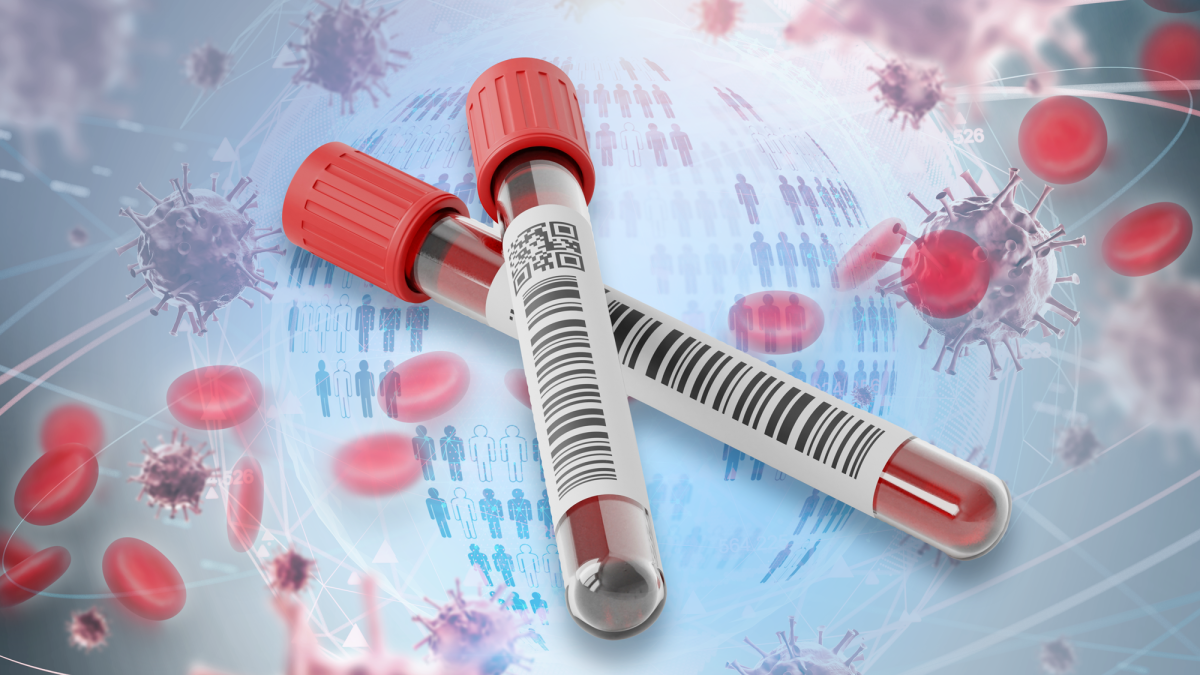Researchers at the Arizona State University Biodesign Institute have made an impressive leap in disease detection, with a novel screening method that can look at hundreds of disease markers and evaluate thousands of samples simultaneously, delivering most results in 24 hours.
Unlike conventional blood tests, the new platform, called Multiplexed In-Solution Protein Array (MISPA), looks at many disease factors at once.
Scientists put the new method to the test in two sets of sampling experiments across the ASU community, described in the current issue of the journal Microbiology Spectrum.
MISPA demonstrates an accuracy comparable with, or better than, existing commercial tests while displaying superior versatility, stability and testing capacity compared with conventional methods.
The adaptability and scalability of the technique make it well-suited for diverse applications, ranging from tracking infectious disease outbreaks to understanding the immune landscape of populations and gauging responses to immunization efforts.
The MISPA platform uses full-length, folded proteins known as antigens, each tagged with a unique DNA strand. The antigens detect and bind to antibodies that are produced by the immune system in response to infection.The technique promises to make individual diagnosis and population-wide monitoring of disease faster, more accurate and more comprehensive.
“There are number of medical scenarios where doctors need to test for multiple possible disease exposures to deliver the best care,” according to corresponding author Joshua LaBaer. “One example would be pregnancy. Currently, this requires drawing multiple tubes of blood and conducting many separate tests. So we were looking to create a reliable and reproducible test that could evaluate all those exposures at once and only require a drop of blood. This technology will allow us to get there.”
LaBaer is the executive director of the Biodesign Institute and directs the Biodesign Virginia G. Piper Center for Personalized Diagnostics. He is also a professor in the School of Molecular Sciences at ASU.
He is joined by colleagues from the Biodesign Institute as well as from ASU’s School of Life Sciences and College of Health Solutions.
It’s in the blood
Diagnostic blood testing is a critical tool in medicine and public health. It allows doctors to evaluate an individual's exposure history to pathogens, monitor autoimmune conditions and evaluate the body’s response to vaccines. It also allows health experts to track epidemics and infectious disease trends in human populations.
Standard blood testing methods, however, are limited to assessing immune responses against one or a few antigens at a time, making complex screening for multiple diseases costly and time-consuming.
An efficient, quantitative screening method that can simultaneously evaluate hundreds or thousands of antigens would provide much more comprehensive immunological profiles of individuals and populations. It could give doctors a richer picture of a patient's infection history and immunity status, helping to guide treatment.
The technology may also help researchers design new vaccines by identifying novel antigens involved in the immune response to disease. The new method holds the potential for reshaping diagnostic testing in both the clinical setting and in public health surveillance.
“Blood can provide us with more information than we thought,” says Lusheng Song, assistant research professor at the Biodesign Center for Personalized Diagnostics and first author of the new study. “MISPA allows us to investigate the immune response in blood against up to 200 antigens across thousands of individuals (~2,000). The depth of the profiling of 200 antibodies simultaneously across multiple bacteria and viruses provides us with a detailed understanding of individual immune status for common pathogens of interest.”
Hunting markers of disease
In addition to greatly expanded testing capacity, each protein antigen used in the study is tagged with a unique DNA barcode. These barcodes allow researchers to precisely identify which antigens (and therefore, which pathogens) the antibodies in a blood sample are responding to.
To perform the test, a tiny sample of blood is mixed with an array of barcoded antigens. Antibodies in the blood, if present for specific diseases, will bind to their matching antigens. Next, the DNA barcodes are read using rapid, next-generation sequencing. This progressive technology allows for speedy and accurate decoding of the barcodes, revealing a comprehensive profile of the individual's immune response to a wide array of pathogens.
ASU immune diary
Students and employees at all ASU campuses were invited to participate in a serological survey to evaluate immune response. The study was conducted in two rounds, spaced six months apart, to monitor the consistency of the immune response in participants and to observe any variations due to infections or vaccinations.
The study tracked 1,064 and 1,397 participants, who were recruited from the ASU community Sept. 13–17, 2021, and March 1–3, 2022. Females and males ages 18–80 who agreed their data and samples for research could be used were included.
Of the 2,443 participants, 2,306 were unique to one of the two surveys. SARS-CoV-2 vaccination/infection status and other demographic information were self-reported.
Portrait of exposure
In the new proof-of-concept study, MISPA successfully identified responses to 39 types of bacteria and 99 viruses in over 2,400 people. Its ability to test so many samples and diseases at once signifies a major advance for large-scale monitoring. The technique could considerably accelerate screening efforts during infectious disease epidemics and pandemics, like the recent global outbreak of SARS CoV-2, the virus that causes COVID-19.
Because the detection process takes place in a liquid, using proteins in their full and folded state, interactions between antibodies and antigens more closely duplicate normal immune response in the body, compared with conventional tests. Surveillance of exposure to various potential pathogens across broad population segments can be carried out, even in situations where collecting clinical samples is difficult.
The current configuration of MISPA supports the analysis of up to 200 different antigens in up to 2,000 samples for a single run. Future advances could significantly expand this capacity. The method’s ability to track multiple antigens with just a microliter of blood serum makes it ideal for molecular epidemiology research.
An important finding of the study is the long-term stability of antibody responses. Data recollected from participants after a six-month period showed consistent immune responses, which is critical for tracking changes due to clinical events. When antibody levels changed markedly between tests, intervening events like COVID-19 infection or vaccination were almost always responsible. This stability underscores the potential of MISPA for monitoring immune system dynamics, as well as long-term health impacts related to pathogen exposure.
This revolutionary tool promises to usher in an era of increased access to comprehensive immunological information at both the individual and population levels. Further, the new protocol will advancethe development of personalized medical approaches based on an individual’s unique immune history.
More Science and technology

ASU to host 2 new 51 Pegasi b Fellows, cementing leadership in exoplanet research
Arizona State University continues its rapid rise in planetary astronomy, welcoming two new 51 Pegasi b Fellows to its exoplanet research team in fall 2025. The Heising-Simons Foundation awarded the…

ASU students win big at homeland security design challenge
By Cynthia GerberArizona State University students took home five prizes — including two first-place victories — from this year’s Designing Actionable Solutions for a Secure Homeland student design…

Swarm science: Oral bacteria move in waves to spread and survive
Swarming behaviors appear everywhere in nature — from schools of fish darting in synchrony to locusts sweeping across landscapes in coordinated waves. On winter evenings, just before dusk, hundreds…




